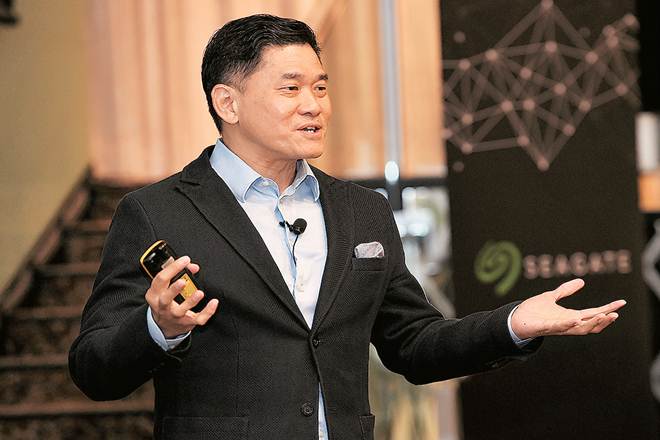Edge computing seems to be the new buzzword these days in tech circles. At a time when consumers and businesses are in an overdrive when it comes to the creation of data, edge computing enables connected devices to process data closer to where it is created—or the “edge.” According to BS Teh, senior vice-president, Global Sales and Sales Operation, Seagate, by 2025, almost 20% of data created will be real-time in nature —rather than being sent to the core of the network for processing. This means enterprises will build on their central cloud computing architecture and develop the ability to process—and securely store—more data at the edge. “In short, get ready for the rise of the edge,” he tells Sudhir Chowdhary in a recent interview. Excerpts:
How is the storage market evolving in the Asia Pacific region?
The storage evolution trends are similar to what we see worldwide, which firstly is evolving and there is growth also. Specifically, it is growing in the mobile cloud area and we see “edge” as a big driver of growth as well. We also see the emergence of adjacent markets, for example, video surveillance —one of the fastest growing markets for which is Asia Pacific. Within Asia Pacific region, India is one of the largest markets for video surveillance. India trends in general again are similar. The differences are that the PC market is still a vibrant market for hard disk drives (HDD) in India. In other countries, the PCs are moving to solid state drives (SSD). In India, the percentage of SSD penetration is lower than that in other parts of the world. Most PCs are still using HDD inside.
Also read | What is GSP status; how US withdrawal of zero duty import benefit hurts India
How has Seagate’s storage market share grown in India?
The growth in India is ahead of growth elsewhere for a couple of reasons. If you look at the last three years for the Indian economy, it has grown significantly. So, that is obviously one big driver. I spoke about video surveillance as an adjacent market to PC and on a worldwide basis, it is one of the fastest growing segments not just for Seagate but for the storage industry.
What is your perspective on the Indian market, given the government’s focus on Digital India, Smart Cities, etc?
All of these opportunities are big growth drivers for us. The question is how do we actually capture these opportunities. I will use the telcos example for this and would say that it is a similar trend that we see in the other market segments you talk about. The telcos in India are deploying a lot of cloud services, they are not buying building blocks or disk drives, they are buying solutions. So, we will sell our product to India indirectly through these OEMs.
As these customers become more technical and their knowledge of the data infrastructure grows, they will look for alternative solutions as to how they can deploy the hardware; therefore, how they buy from us will be different. They may start engaging with us directly as they may feel that they may not have to buy a complete solution but may just want to buy a disk drive. We have different kinds of business models starting to emerge as compared to before.
Read | Sensex rises 194 points, Nifty closes above 11,000 first time since February 7; RIL, ICICI Bank, HDFC up
How do you plan to target the enterprise market of India?
We definitely want to engage with these large enterprise customers. It is less about going after the banks and more about looking at the specific target markets and telcos being one of them. Of course, engaging with the e-commerce players and all of that is there. We can look at the best ways to really engage with the markets and it could be as simple as providing direction and sharing the technology so that we can guide them in the right way. But fundamentally, we want to engage with the enterprise customers directly to have the conversation.
Is there a specific business strategy to target SMBs?
For SMBs, we have solutions like NAS (networked attached storage) applications. We look at doing a lot of market engagement for NAS solutions and SMBs. Another big area is looking at storage server solutions and partnering with our distribution and system integration partners to look at how we can collaborate and launch these type of enterprise cross-solutions to the SMBs.
How will IoT impact businesses, especially with respect to their storage needs?
I think the impact will be immense because IoT is very generic. You got to zoom in on either specific zones or applications. We see India as a large consumer market, IoT will make the shopping experience a lot more efficient. So, this will help us understand user and consumer needs more effectively and ensure we are providing the right kind of solutions using the right kind of channels.









